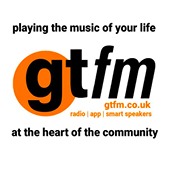Valleys Rugby, by Siôn Tomos Owen
VALLEYS RUGBY
A few years ago I was asked to fulfil a lifelong dream of writing an opening monologue for BBC Scrum V, not only that but on the entrenched historic derby matches of Ponty v Cardiff. I relished it, the words poured forth from watching my father, Adrian Owen, play at The House of Pain and later as a season ticket holder in my teens, as well as the fact that as captain of a valley’s school side and as prop for Treorchy Youth, playing Cardiff teams was an easy captain’s speech.
We, as in beyond the M4, in the valleys or The Valleys with a capital V when they can’t be bothered to differentiate one from the other, We because it comes from deep within us. As valleys clubs, we have a different attitude engrained in us, within the DNA of clubs buried in the cwtch-under-the-stairs of a town, under glowing floodlights between terraced streets or perched on a Gren-like cartoon hilltop where ballboys bond from fishing Gilberts out of the river.
Our towns and villages today are a far cry from those forged in the fires of the industrial revolution, but players, fans and families still do most of the living and dying in these communities and the rugby club remains at the heart of many of them. Grassroots club rugby is still the beating heart of Welsh rugby, despite the state of the modern professional game in Wales (which for some is still an open wound), our valleys clubs are the heartbeat which became a pacemaker for a prosthetic region, because you may be able to replicate the function of a heart but you cannot recreate it’s calon.
Of old, Pontypridd the Gateway and Merthyr the Melting Pot are bound by the artery of the A470 through which flows our shared history and camaraderie, but by proximity, it also meant that when we played each-other we fought a small but intense, and often bloody, battle every weekend.
I recently asked my father what he felt was the most important aspect of the game when he played in the 70s and 80s and his reply was “camaraderie”. I ribbed him for his cliché answer but he explained that it wasn’t just important, it was the most important part because everything else was built upon it. If you could look around the field and see that when you needed them, you could rely on every other member of your team (“including the backs”!) then everything else was simply rugby. In an era which was built on the mantra of “Ruck, ruck, ruck and ruck again”, you had to know you could rely on your team-mates, that they had the same spirit and passion as you, brothers bound as tape to cauliflower ears.
Inevitably as the modern game developed, that mentality of rugby had to be stamped out (pun intended) so the “enforcers” of today need to be cleverer, less sledge of fist, more slight of hand (or shove of shoulder in Itoje’s case), sending one through would now not only end in sending one off but sending one away. The game is totally different. But here, in these valleys, the spirit is still there, the passion is still there, the camaraderie is still there, every week, on the fields, on the sidelines and in the stands. And we are still there, cheering them on.
Siôn Tomos Owen
Rhondda valley artist and broadcaster





















